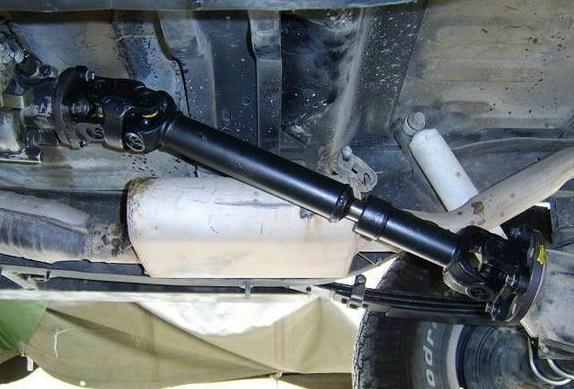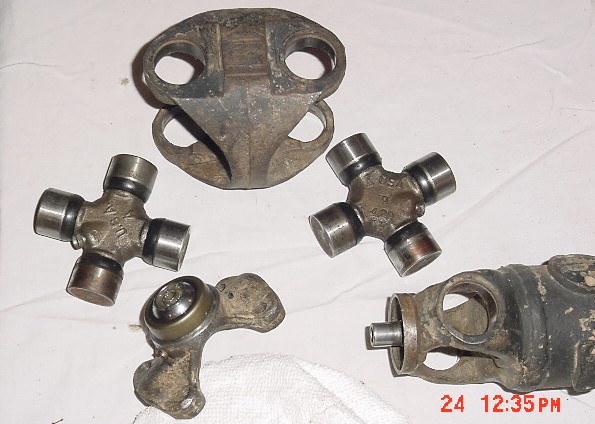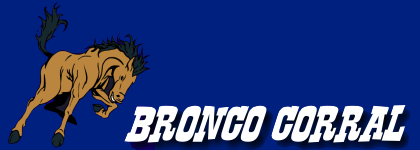
By: Andres629
Please reply if any part of this is confusing… I don’t have any lengths for any of this stuff, I just know how much shorter/longer each part is. I have done my best to make this as easy to understand as possible, but I’m not always the best at describing stuff. Haha! I am definitely open to constructive criticism as well as solid measurements for each part in question!
Now, the reason I wanted to do the Explorer front shaft on the rear, was because these front driveshafts have a double-cardan (also known as a constant velocity) joint on the t-case side. With a local guy who has lots and lots and lots of RBV parts, we went on a mission to determine different factory driveshaft lengths.
What we found when I was looking into doing this was that, depending on the length you need, there are a few different combinations that one can use. Now I don’t know the lengths off hand, so bear with me as I say “longer, shorter” etc.
1st Generation (91-94) Explorers and 2nd Generation Explorers (95-?) have different driveshaft lengths…that equal the same length. Yeah, I know. The 1st Generation Explorer had a longer main shaft (~2″ longer) and had a slip yoke that was shorter. The 2nd Generation has a main shaft that is ~2″ shorter than the 1st Generation., BUT uses a longer slip yoke to compensate for the short main shaft.
So now you can see that with a combination of parts, you have approximately 4″ to play with. For example, you can shorten a factory 1st Generation front shaft simply by using the main shaft from a 2nd Generation. The same goes for lengthening. Use the slip yoke from a 2nd Generation, and the main shaft from a 1st Generation, and you get a 2″ longer driveshaft. Also a neat thing to note, the transfer case slip yoke portion from an Explorer rear shaft has the same spline count as a front. I am unsure of the length difference here though, all I know is that they work on a front shaft.
Now, to address the problem of mounting a front shaft on the rear of your t-case, there are two ways to do this. First, and not the way I chose, but the spline count on the front and rear output on a 1354 transfer case are the same. Therefore, you can put the front output yoke on the back. If you take a look at a front driveshaft, you’ll see the problem. The rear output flange is a flat-style, like on the pinion of the rear differential. The output on the front of a 1345 case is not. It is a u-style yoke that the u-joint sits down into and bolts from the back side. I left the rear output as flange style, and here’s what you can do to utilize this.
I swapped to a 1354 t-case anyway, so this is what I’m going from. I’m not sure if the flange pattern is the same from 1350 to 1354. Mine wasn’t. But I believe that the Bronco II’s that came with the CV style driveshaft (like a car CV, not double-cardan u-joint style) had a smaller bolt pattern than what I am about to describe. What I did to keep the flange-style mount on the t-case was this:
Look at the front shaft. Here’s a picture of a double cardan disassembled.

See the “H” piece of the shaft? Just below it is the factory yoke for the front output. Notice the little “ball” in it? That whole yoke needs to be replaced with one that will accept the ball and socket of a double cardan. What I found was that a regular cab 4×4 Ranger has a double cardan rear shaft, which means flange style mounting, and still has the provisions for a double cardan. If you snag the transfer case side flange from the Ranger shaft, that will fit right in place of that stupid little yoke for the front output. Also take the pinion side flange from the rear driveshaft of the Ranger, you’ll need it to put on the slip yoke of the Explorer front shaft to make it compatible with the pinion flange on your differential. Depending on your transmission/rear differential combo, the length of your driveshaft will be dependent on that. I am running an M5OD and an 8.8, I used a second gen main shaft and a first gen slip yoke as reference.
There you have it! Hope you can process all that information in one sitting… it’s a lot to read!
Feedback:
Concern: Not so fast, on the 1993 explorer that i got my axles and drive shafts from, the slip yoke splines ARE NOT the same. Not even close.
Reply: I used the slip portion from an Explorer rear shaft on the main shaft of the Explorer front and it worked out fine. Maybe there are some discrepancies between years, but I pulled the shafts from a 1991.
